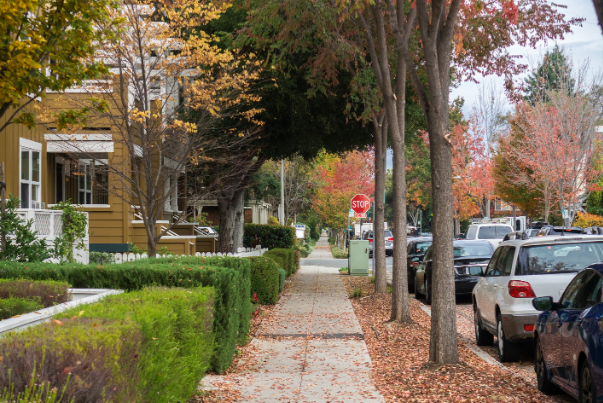If 2023 was the year that the local housing market defied expectations in the face of economic challenges, then we can expect 2024 to be a year of continued improvement.
The Midpeninsula housing market proved to be resilient despite last year's rocky start marked by rising mortgage rates and tech-industry turbulence. The real estate landscape not only weathered the storm but experienced notable recovery, painting a surprising picture of strength and adaptability.
With current interest rates decreasing, stock markets stabilizing and overall economic conditions improving, the housing market is poised for further recovery in both volume and price.
Here's a look at where the Midpeninsula's housing market was last year and where it's expected to go in 2024.
Navigating the storm
The start of 2023 began with ominous predictions of increasing mortgage rates, a sharp decline in the NASDAQ tech stock index and major tech companies reducing their workforce.
The situation worsened with regional bank turmoil, especially impacting Silicon Valley. Against all odds, home prices continued their upward trajectory throughout most of 2023, even as the 30-year fixed mortgage interest rate reached its peak at 7.8% in October.
By the third quarter of 2023, many indicators started to show year-over-year improvement. The digestion ratio (the pertenage of homes that went into contract during the same period of being listed) rebounded from its 2022 year-end low of 49%, reaching 56%. The median sold price of a single-family home climbed back to $3.4 million, reflecting a market shift from underbidding to a 7% overbidding average.
While the median price dipped once again to $3 million in the last quarter of 2023, this was largely attributed to seasonality. Noteworthy was a specific transaction involving an aging 1,800-square-foot home listed below $3.5 million in Palo Alto's Crescent Park neighborhood. This property garnered remarkable interest, receiving over 10 offers and witnessing a bidding war that drove its final price up by over $700,000. The scarcity of available inventory prompted buyers to act decisively, confident in their actions, given expectations of a further drop in mortgage interest rates.
Supply and demand dynamics
The housing market's resilience was fueled by a limited supply of homes. Only 577 single-family homes and condos were listed for sale in the region during 2023, marking a 12% decline compared to the same time the previous year and nearly one-third less than the peak in 2021. Homeowners benefiting from historically low mortgage rates locked-in during the pandemic had little incentive to sell. Concurrently, the rebound of the NASDAQ tech stock index and the AI-boom-generated wealth generated strong demand from young families in Silicon Valley.
Cash transactions and annual trends
High borrowing costs led to a surge in all-cash transactions. Among the 417 home sales in Palo Alto in 2023, 133 (32%) did not using financing. This was the highest level since 2018, and a 46% increase from 2021 when the mortgage interest rate was at a historic low.
Despite all the catching up through the year, home prices still showed their first decline since the pandemic. The median price of a single-family home in Palo Alto declined by more than 8% to $3.3 million. The total number of transactions in 2023 dropped by 11% compared the same time the previous year. The hurdle of the pandemic peak in the first quarter of 2022 remained high.
Challenges in the higher-priced segment
The lackluster performance of homes listed in the higher-priced segment exerted downward pressure on overall housing prices. Notably, there was a substantial decline (23%) in the number of homes sold at or above $5 million, surpassing the 7% decline observed across all single-family home sales. All three affluent sub-neighborhoods of Palo Alto, namely Old Palo Alto (-12%), Crescent Park (-14%), and Professorville (-23%), experienced double-digit drops in median sold prices. Importantly, this decline was not attributed to a scarcity of high-priced homes but rather to a drop in actual sales.
In contrast, the high-price point in the broader region painted a different picture. In the combined Santa Clara and San Mateo counties area, the number of homes sold at or above $5 million experienced a more moderate decline of 16 %. Remarkably, neighboring Atherton defied the trend with a 15% increase in sales volume for homes in this price range. The divergence raises questions about Palo Alto's luxury offerings in 2023; it's possible that buyers favored alternatives. Privacy emerges as a key consideration for high-end buyers. Palo Alto's higher overall density, combined with more potential zoning changes to further drive up density, also might be influencing their preferences.
Looking ahead
In 2024, we can anticipate the release of more homes on the market. This will unlikely lead to an oversupply of homes for sale, however, given the low probability of a return to historically low mortgage rates. In fact, the higher normalized interest rate may put some pressure on the long-term appreciation of home values since the cost of debt is higher permanently.
The tech industry's shake-off of excesses built during the pandemic bubble, though worrisome for layoffs, is seen as positive for the industry's long-term health.
Xin Jiang is a real estate agent with Compass in Palo Alto. She can be emailed at xin.jiang@compass.com.


Comments